In 1939, Watson Senior agreed to finance the construction of Howard Aiken’s Automatic Sequence-Controlled Calculator, known as Mark 1. This machine was an electromechanical program-controlled calculator composed of gears and axles, incapable of storing instructions or of performing conditional jumps. A costly exercise in obsolete technology, outmoded by the invention of ENIAC, the Mark I nevertheless gave IBM some valuable experience in the design and construction of large calculating machines. But IBM’s relationship with Aiken came to an abrupt end after the Mark I’s dedication at Harvard in August 1944; Aiken, seeking to arrogate most of the credit for the Mark I, scarcely mentioned IBM at the ceremony, and he and Watson had quite a row. (“If Aiken and my father had had revolvers they would both have been dead,” Tom has said.)
Watson believed that there was little market for computers outside academia, and he had no intention of committing IBM’s resources to a manufacturing effort. However, he decided to continue IBM’s work in the field on a modest scale, chiefly for the public relations benefits. Despite Aiken’s attempt to hog the limelight, IBM received a good deal of favorable publicity from the Mark I, and Watson, who was keenly aware of the commercial value of a good public image, considered a small computer program worth the expense. The Mark I had cost about $500,000 and had prompted a lot of good will in academia. In 1945, therefore, IBM began work on another computer, this one designed by Wallace Eckert, head of the Watson Scientific Computing Laboratory at Columbia University.
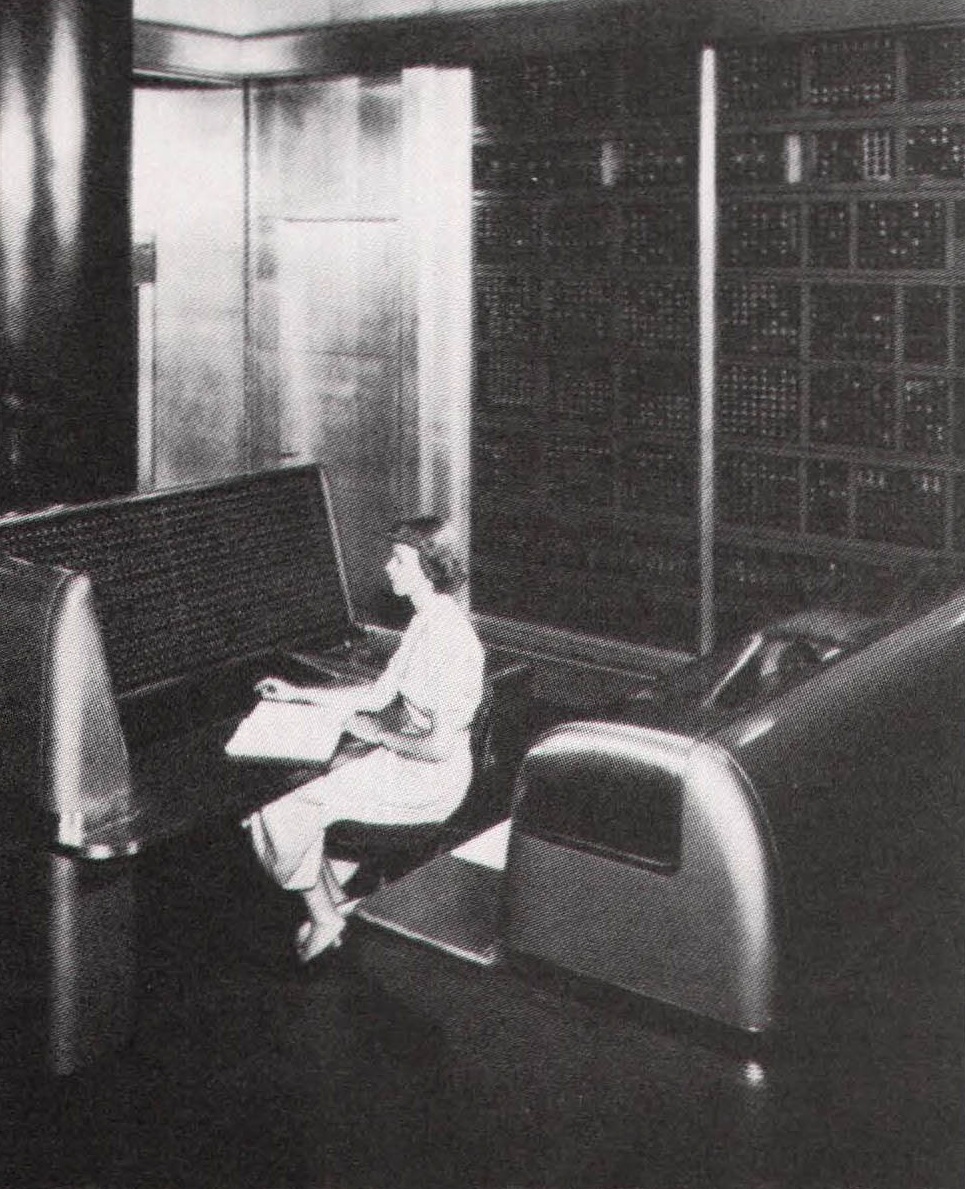
Completed in January 1948, the Selective Sequence Electronic Calculator (SSEC) was a technological hybrid, an expedient combination of old and new tricks. It contained 12,500 tubes and 21,400 electromechanical relays; the tubes carried out the arithmetic and stored a small amount of data and instructions (eight twenty-digit decimal numbers) while the relays served as a slower but larger internal memory (150 numbers). Another 20,000 numbers were stored on sixty-six reels of punched tape. When the SSEC performed an operation – say, the addition of two numbers – the necessary instructions and data were transferred from the tape to the relays to the tubes, where the instruction was executed. Although the job of transferring numbers and instructions through the hierarchy of memory consumed a lot of time, the SSEC, by virtue of the size of its memory, possessed a great deal of computational power – much more than ENIAC.

Nevertheless, it was really another decimal-based, program-controlled calculator, and it had almost no influence on computer technology. Rather than building upon ENIAC’s pioneering technology, IBM had chosen a characteristically conservative approach. Some experts, chiefly at IBM, regard the SSEC as the world’s first stored-program computer, but they are in the minority. True, the SSEC’s instructions and data were both coded in numbers and stored in the same memories. However, the machine wasn’t fully automatic; it used a series of removable plug boards to help control the transmission of numbers, meaning that a small but significant part of its programs were implemented by external wiring. The SSEC ran its first program, a calculation of the moon’s position, on 27 January 1948 – six months before the fully electronic Mark I at Manchester University ran its first stored program.
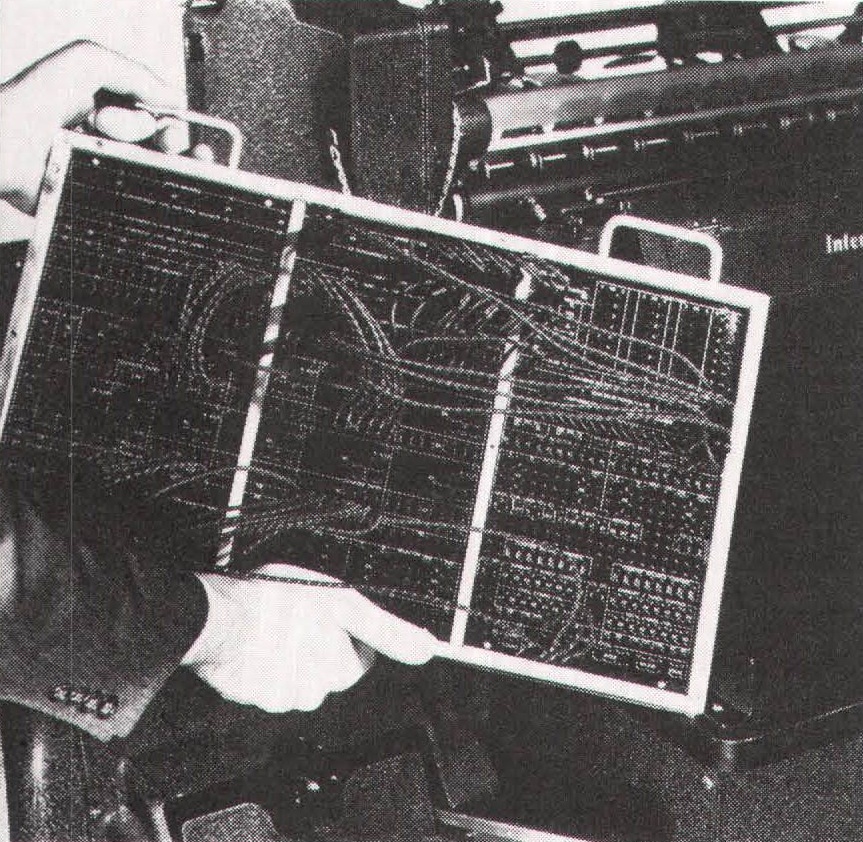
The SSEC was installed in an IBM building on Madison Avenue in Manhattan, where it was visible from the street and where it attracted a great deal of attention from the public and the press. Passersby gathered in groups at the windows, watching the huge machine’s blinking lights, spinning reels of punched tape, and dual printers, each spewing out data at the then phenomenal rate of 30,000 digits per minute. (The printers recorded every step of every calculation, making it easier for the programmers to pinpoint errors.) Obsolete from the start, the SSEC led a short but useful life, calculating, among other things, a table of lunar positions that was used to chart the first landing on the moon.
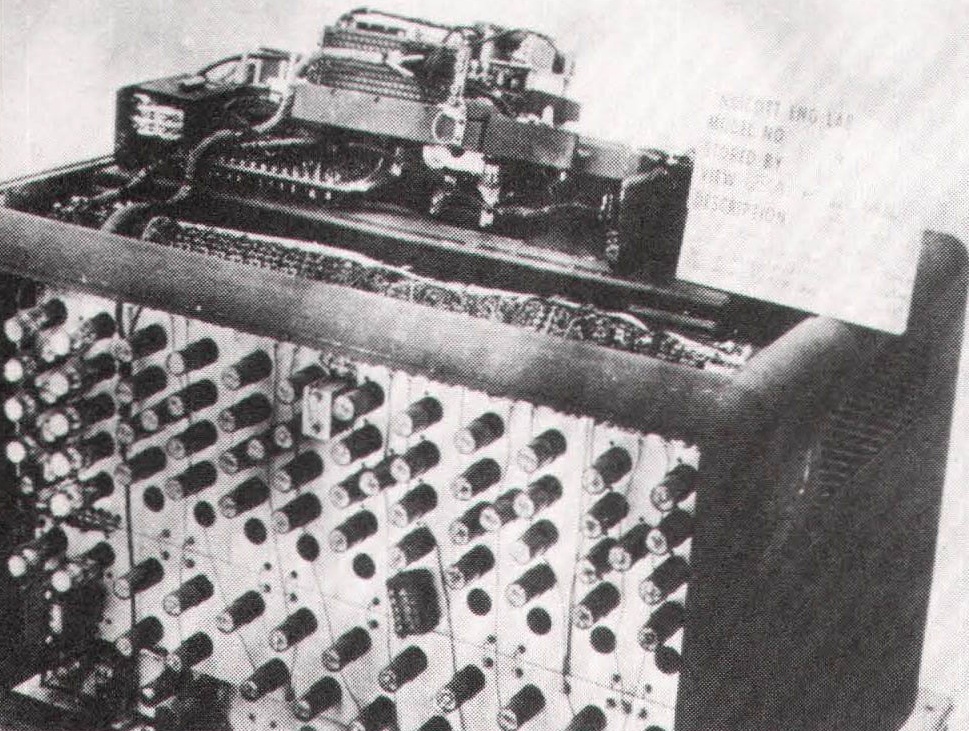
While the Mark I and SSEC were being built, engineers in other parts of IBM were experimenting with electronic calculators. This endeavor was a natural progression from IBM’s electromechanical equipment, which ran on punch cards and used relays – essentially the same technology that Hollerith employed in his first tabulators and sorters. In March 1942, at IBM’s main laboratory in Endicott, New York, a small team of engineers developed an electronic cross-footing keypunch, a sophisticated version of the old-fashioned electromechanical card puncher. As the operator keyed in two numbers on a card, this gadget automatically added or subtracted the figures, punching out the result on another part of the same card. Later that year, the engineers devised an electronic multiplier that, working with pre-punched cards, could multiply numbers at the modest rate of one hundred cards a minute.
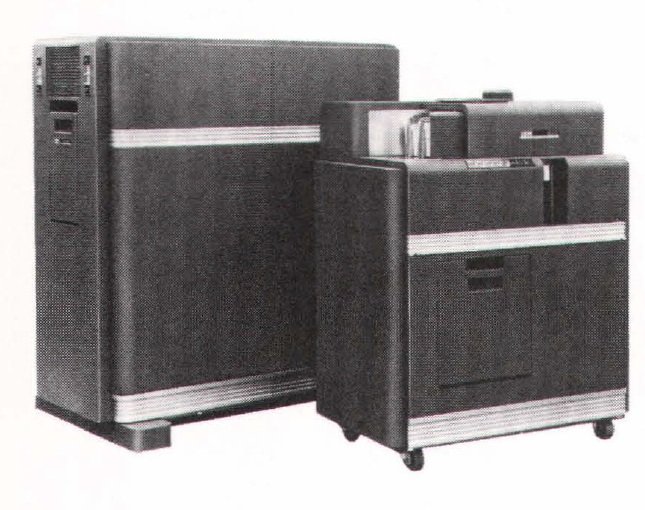
Neither machine was much of a technological achievement, but the multiplier got IBM into electronics. As a former military pilot, Tom Watson was quite familiar with radar and other avionic devices – the typical B-29 had about a thousand tubes – and he had a fine appreciation for the potential of electronic technology. Although Watson Senior and other old hands at the company believed that IBM’s customers would shy away from anything electronic, considering it too advanced and possibly unreliable, Watson decided to let his son test his hunch. As a result, one hundred electronic multipliers were manufactured, and the IBM 603 was put on the market in 1946 at a rental rate of $550 a month.

To everyone’s surprise – including Tom’s – the entire lot was snapped up. As a result, IBM decided to introduce a more sophisticated and truly useful multiplier, and the IBM 604, which had 1,400 tubes and a plug board for executing simple instructions (such as conditional branching and looping), came out in 1948. The 604 became one of IBM’s most successful products. More than 5,600 of the these machines were built over the next ten years, introducing IBM’s customers to electronic data processing and whetting their appetites for computers – made by tried and trusted IBM.

While Tom and the firm’s other young Turks were leading the company into computers from the inside, IBM’s customers were pushing it forward from the outside. In 1948, at the request of the Northrop Aircraft Company, IBM lashed a 603 electronic multiplier to an ordinary electromechanical tabulator and created – mirabile dictu! – a calculator programmed by punch cards. Other customers were interested in the machine, and IBM revved up for production. More than seven hundred card-programmed calculators, or CPCs, were built over the next few years – another electronic machine that paved the way for computers, and for IBM, entered the market. Meanwhile, the Social Security Administration, which was drowning in punch cards, also approached the company for help. IBM built a magnetic-tape processor (actually, a giant memory) that could run five tape decks, or drives, at once; since each ten-inch reel of tape could store the equivalent of 15,000 cards, the government got what it needed and IBM had one of the basic parts of a computer system.
By 1950, then, IBM had hundreds of computerlike products on lease and a good deal of experience making and marketing them. Still, Watson and the company’s top punch card executives were reluctant to get into computers. And then, in June 1950, the Korean War broke out. In an effort to assess the computational needs of the defense establishment and to do its part for the war effort, IBM dispatched two scientists on a tour of the country’s chief defense contractors, research institutes, and military branches. James Birkenstock, Tom’s executive assistant, and Dr. Cuthbert C. Hurd, a mathematician who had joined IBM from the Atomic Energy Commission, visited twenty-two clients, including the National Security Agency, the Boeing Corporation, and General Electric. As Birkenstock recalled:
It dawned on us that while all of them had different requirements they varied not that much. Probably one scientific computer wouldn’t answer one hundred percent of the problems of each agency, but it would solve ninety percent of them. I was particularly anti doing anything that required giving away all our rights and data to the government and not having a solid patent position. I said to Tom, “Why not build a production lot with IBM’s own money?” Tom said it was a big gamble; a three-million-dollar gamble seemed awfully big.
Birkenstock’s question triggered a fierce internal debate. The product planning department – the group responsible for the commercial aspects of new products – opposed a private computer project. “Because they could not imagine classes of problems different from those treated by punched-card equipment,” Hurd wrote years later, the planning department “told me throughout 1950 that no computer could ever be marketed at a price of more than $1,000 per month.” But the Defense Calculator, as IBM’s contemplated computer was at first called, would have to go for at least $8,000 a month. Other than a few government agencies and defense contractors, the planning department argued, no one, but no one, would order the machine. Therefore, the project would be a dead end, a waste of resources better spent on developing new punch card machines.
But Tom, Hurd, Birkenstock, and others saw it as a unique opportunity to get into computers. Before taking the plunge, though, Tom decided to send Hurd and an assistant on the road again, seeking firm commitments. Astonishingly, the men returned to Manhattan with thirty letters of intent. Not bad. IBM engineers got to work, and by March 1951 a detailed design was completed – showing, among other things, that the $8,000 rental rate wasn’t even close to the actual production cost. The price was hiked to a forbidding $15,000 a month. Yet, even at that astronomical fee, almost half the customers stuck with their commitments – a revealing lesson in computer economics.
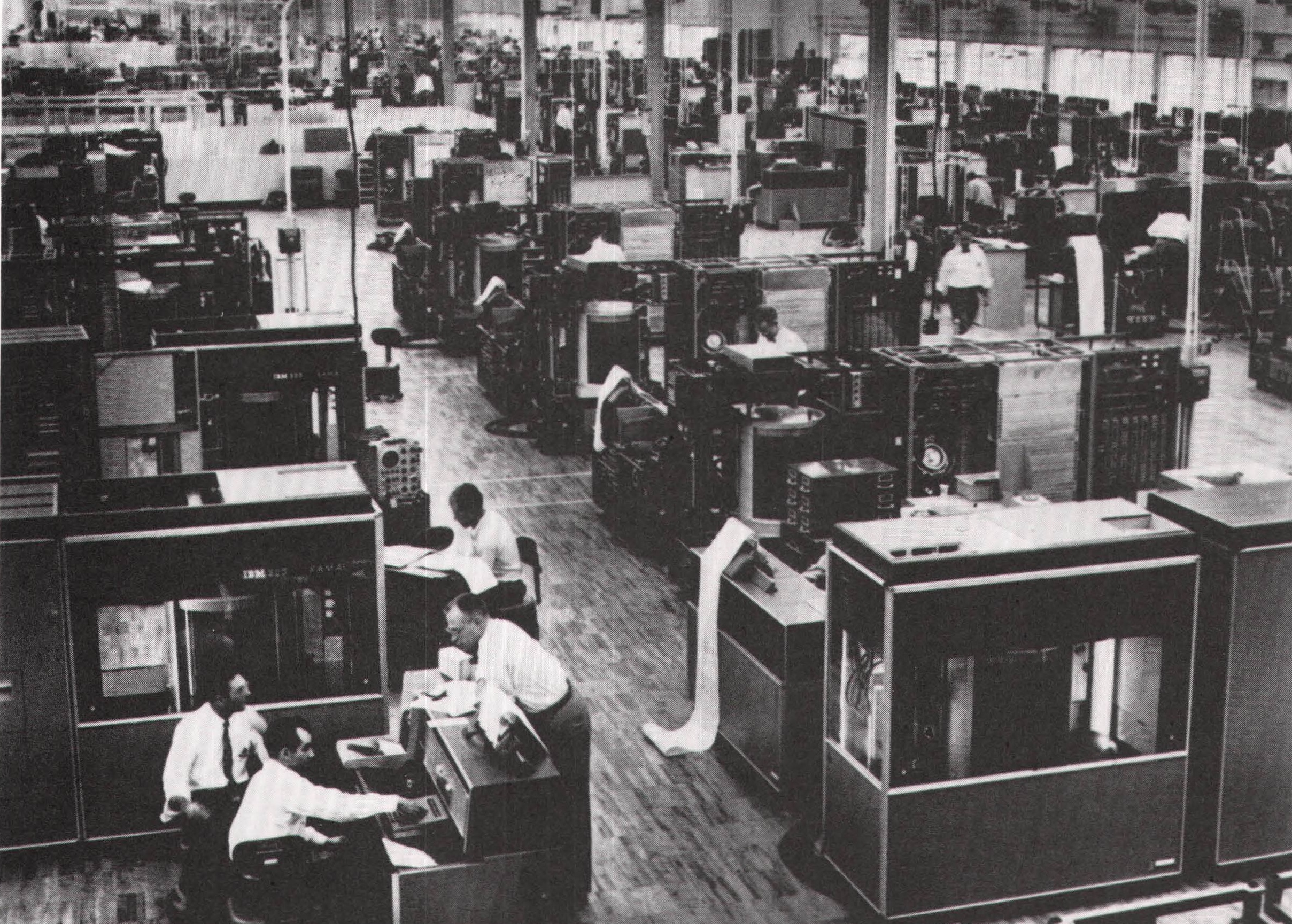
In 1952, the Defense Calculator went into production at IBM’s plant in Poughkeepsie. Smith Holman, the factory’s general manager, told Richard Halen, the computer’s production manager, to “layout the department so it looks like a manufacturing set-up. It’s the first one in the world. [Actually, Remington Rand’s UNIVAC plant in Philadelphia was first.] I can’t tell you how to do it. But customers will be coming to visit us, so you’ve got to make it look like we know how to build computers.” Meanwhile, IBM, which employed only a handful of electrical engineers before it started work on the Defense Calculator, started hiring electrical engineers (EEs) in droves. Within two years the company had almost five hundred EEs on the payroll.
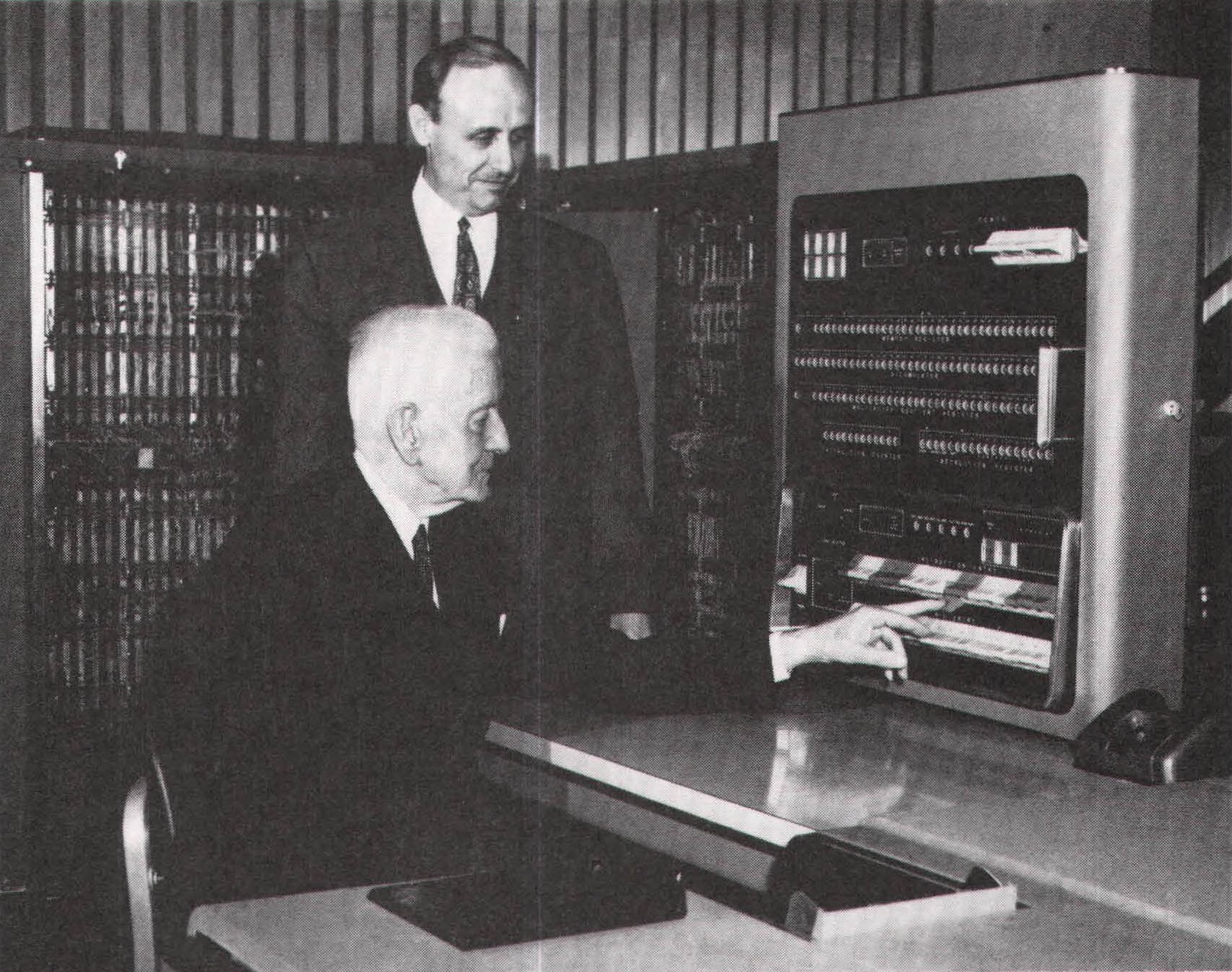
The first IBM 701, as the Defense Calculator was renamed, was delivered to Los Alamos in March 1953. It was a binary computer in the von Neumann style, with 4,000 tubes, a read/write electrostatic memory of 4,096 words of thirty-six bits each, and the ability to multiply two words in 456 microseconds. It was full of innovations, right down to the packaging; the machine was built in sections, and every box fit in a standard elevator and through an ordinary door. All told, IBM produced nineteen 701s – eight for aircraft companies; four for government agencies; three each for universities and large corporations, such as General Electric and General Motors; and one for itself. A data-processing company since 1890, IBM was finally in the computer business.